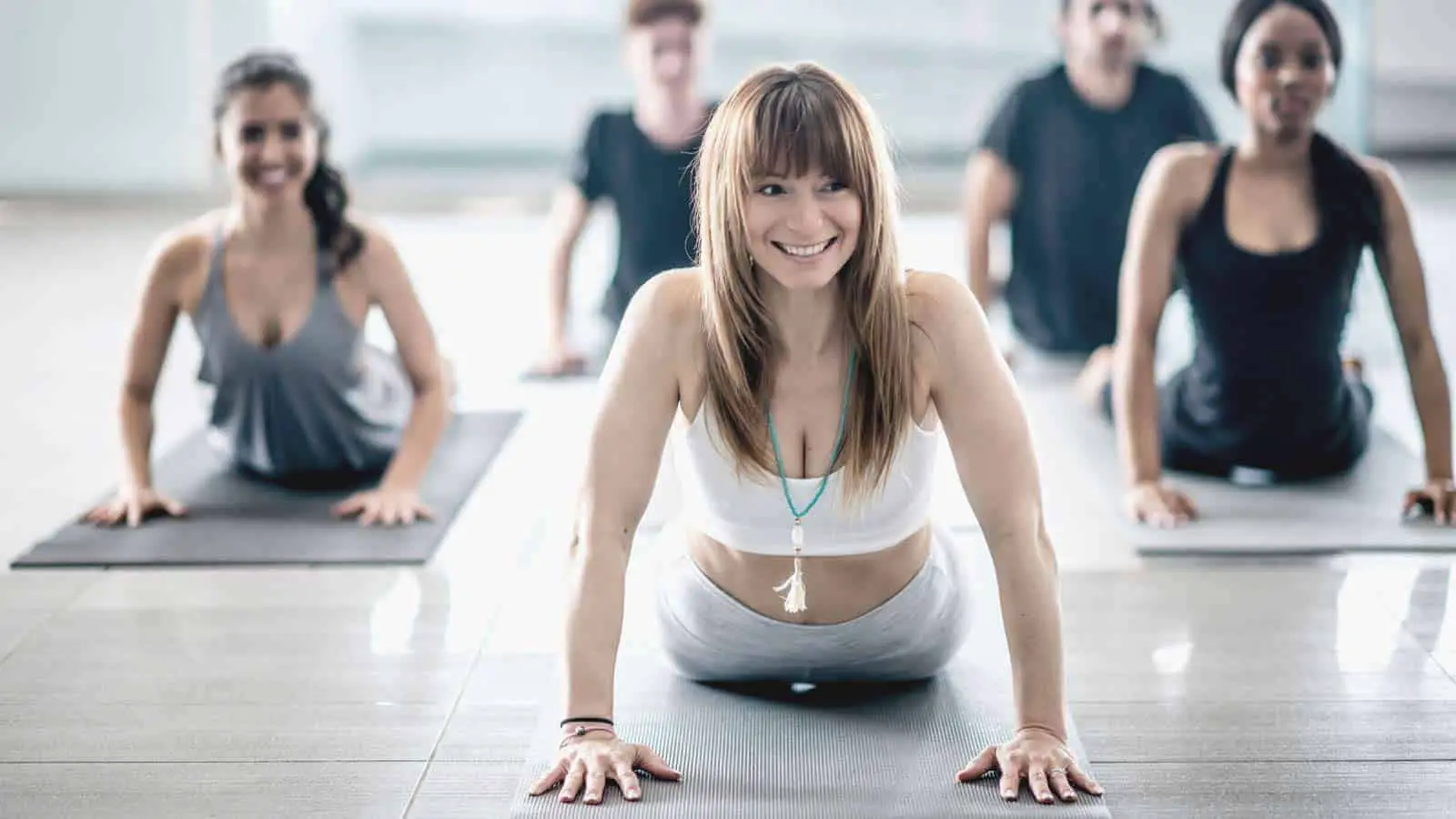In the previous blog post, we took a quick trip through timeline of yoga to identify some of the origins of yoga. We learned that yoga did not start out as a physical practice. Instead, it was an oral philosophy that was taught in the Vedic religious rituals in India. We also learned that out of this foundation grew several schools of thought. Yoga moved from an unorganized, confusing, and often contradictory message to a structured and documented guidance toward self-knowledge and enlightenment.
As things changed overtime, more thought was brought into this narrow view of achieving enlightenment. This view broadened as the physical body (through movement and breath – Hatha Yoga) was thought of as a key component toward that achievement. These traditions carried forward into more structure and more organization; the result – different types of yoga.
Different types of yoga can be categorized as easy, difficult and specialised. Regardless whether it is Yin, Restorative, Power, Hot yoga, Areal or Prenatal, all yoga types incorporate breath work, movement to cleanse and purify the Mind, and rituals that keep the philosophy connected to its roots. All to bring the individual practitioner closer to a greater sense of self and connection to the Divine.
In this article we will take a look at the most popular styles of yoga that come out of these traditions. If we were to place the various popular styles of yoga on a scale ranking them from easiest to hardest, this is the order in which these schools of thought and practice can be placed. As you read through these styles, you will see how they relate to the origins and ancient traditions of the practice. Further, you can begin to note whether or not the practice fits your individual needs.
TAKE IT EASY
Pranayama
We begin with Pranayama breathing. Pranayama literally means breath control. We start here because in most styles of yoga practice, breath is the foundation. Whether you are sitting to meditate or attending a hot yoga class, breath is the basis of the yoga practice. Pranayama is not only an action that you perform – breathing – but you may find classes devoted entirely to this exercise.
Breathing may seem arbitrary, it’s something that we do without thinking, but breathing is very important, especially in yoga. When one consciously breathes, that is, pays attention to the automatic mechanism of breathing, the yoga practitioner brings a greater sense of presence and awareness to the entire being.
Let’s go back to the yoga history lesson for a moment. Remember Tantra Yoga? The yogis of the Classical Era claimed that the body was essential to living a yogic lifestyle. The human existence is fully related and connected to the non-physical realm, they also claimed. But in order to be in balance with the spiritual and ethereal world, one must cleanse and purify the physical body first. The breath and performing certain breathing exercises denotes the action humans need to take to purify and cleanse.
Pranayama, is an essential part of the yoga practice
Breath is the essence of life, right? Well, that’s exactly what the word “Pranayama” implies. The first part of the word, ‘prana,’ refers to the life force, or the energy that gives us life. The second part of the word, ‘ayama,’ refers to the action that we give that energy. Since breath is our life force, we can bring many actions to the breath: hold it, slow it down, speed it up, etc. With the various actions or breath work exercises, it keeps the yogi fully connected and alert. Our Minds tend to wander most of the time, often thinking about the past or the future.
Mindful breathing, like Pranayama breathing, keeps the person in the present moment. That is what we are trying to achieve with yoga. Further, breathing exercises also stimulate a healthier body overall. They improve our blood circulation for a healthy heart and lungs and helps to regulate conditions like stress and anxiety. Most everyone wants these things and can certainly be a benefit when one practices yoga.
Just know that breathing, Pranayama, is an essential part of the yoga practice. In a way, it can be the simplest yoga to practice. All you have to do is sit comfortably, close your eyes, and focus on taking slow deep breaths. That’s it! That’s Pranayama in Yoga. That IS yoga!
Restorative Yoga
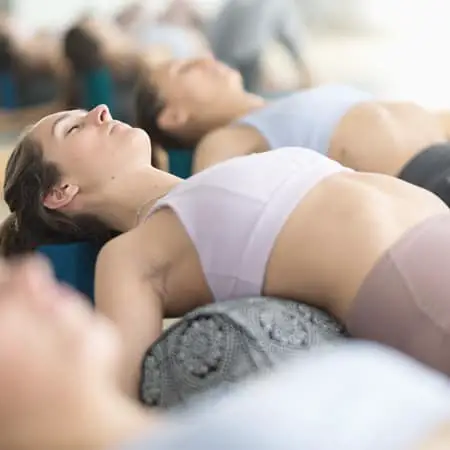
This type of yoga practice is designed for the practicing yogi to fully relax their entire body in various reclining yoga poses. The purpose and intention is to reduce and release tension in the body by holding easy poses for long periods of time, 3 to 7 minutes on average. The body is supported with yoga props like blankets and bolsters to create a sense of ease and comfort throughout the body. As mentioned above, breath is the foundation of most yoga practices, and that includes Restorative Yoga. The breath work here, however, is gentle, slow, and easy; the action of the breath is complimentary to the style of yoga that is being practiced.
Needless to say, this is a type of yoga that everyone can practice and definitely needs, especially with our very busy lifestyles. You don’t have to have any yoga experience to practice Restorative Yoga. Any and all levels of yogis are encouraged to attend a class like this. It may be a nice way to introduce someone new to yoga.
Yin Yoga
Much like Restorative Yoga, Yin Yoga is a yoga practice that is mostly done in a reclined or sitting position. Again, yoga poses are held for long periods of time, but the intention is slightly different.
Yin Yoga is considered a healing practice that focuses on the release of connective tissues, fascia, and ligaments. (These essentially are the fibers in the body that hold you together.) The body is overworked, strained, and prone to injury. These conditions bind up the physical body. It takes specific manipulative measures, like a Swedish Massage, for example, to release those tensions. A good image to use is taking a piece of plastic wrap and wad it up into a ball. When you place it on a table, the plastic wrap doesn’t unravel on its own. It needs to be pulled apart manually. Our bodies need a similar type of treatment. Yin Yoga can help with these issues, since the yoga postures, of which you only practice 5 to 8 in a class, are designed to target connective tissues for healthy release.
Little yoga experience is necessary to practice this style. If you’re an athlete, or experience general aches and pains or other types of soreness in the body, Yin Yoga is a great practice. Not only does the yogi open up physically, but there are also energetic shifts that can lead to a deeper healing and transformation.
Restorative and Yin Yoga are just few easy yoga practices which would be a great entryway into developing a fuller Yoga experience. Everyone can benefit from healthy Pranayama breathing and relaxing yoga postures to help heal the physical body.
LET’S START MOVING
Now that we have taken a look at some easy yoga practices that are ideal for the new yogi, let’s continue our voyage and discover some practices that will get your body moving. In the tradition of yoga, you’ll see that the following yoga styles continue to feature the foundations of the ancient texts.
Yoga was and still remains a lifestyle and philosophy that can bring people to a greater awareness of themselves and their connection to the Divine.
Anusara Yoga
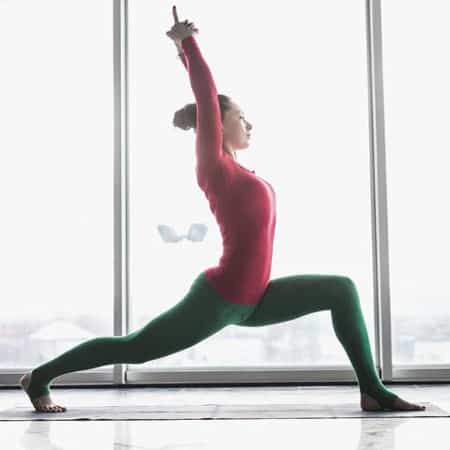
This style of yoga was born out of the Hatha Yoga traditions established by B.K.S Iyengar. It was redefined by John Friend in 1997 and focuses on alignment, muscle engagement, and breath as the practitioner moves from one pose to the other. As you may recall, Iyengar introduced an element of medicine and healing to this style of yoga. With breath and movement as the foundation, he encouraged yoga students to use the practice as a way for physical healing, thus the use of props to assist the yogi.
You will see a similar approach in Anusara; the word actually means “flowing with grace,” “follow your heart.” It’s connection to the early thoughts of yoga reminding the student that the physical practice of yoga, that is rooted in breath, is the foundation of life. More specifically, the Prana, or life force that resides in all things, is the source that binds us all together.
Anusara is a yoga practice that is open to all levels and abilities. Since part of its focus is on strengthening and healing, it will prove to be beneficial to yogis who are looking to improve and/or enhance parts of themselves like flexibility, balance, and feeling grounded and centered.
Power Yoga
This type of practice will focus on the movement of the body, alignment, breath, stability, strength, mobility, and flexibility. When we think of yoga, these are some of the things that come to mind as benefits of yoga practice. Power Yoga highlights those features.
Power Yoga is a relatively new style of yoga. It was introduced in the early 1980’s by Bryan Kest and later branded in the 1990’s by Baron Baptiste. It is sometimes called “gym yoga”; it was a way to introduce yoga to the health and fitness enthusiast who wanted a “workout” in their yoga practice, but still benefiting from the philosophical intentions of yoga. In some cases, Power Yoga classes are heated to raise the intensity of the practice, but that isn’t always the rule. Studios that may not feature a hot studio, rely on the yoga poses and movement to heat up the internal and external body. In either case, the warmth of the body can assist the mobility and flexibility of the yogi as they practice.
Power Yoga actually derives from Ashtanga Yoga and Bikram Yoga, but is listed here as a Hatha Yoga practice that would be suitable for a beginner or intermediate practitioner. Unlike its predecessors, Power Yoga is not a series of set poses. These classes may be different every time; perhaps focusing on specific body parts much like working with weights in the gym. In one class you may perform poses that bring more strength and mobility in your shoulders while in the next class the flexibility of the hamstrings will be the focus.
If you’re looking for a little intensity and variety, Power Yoga may be a good class for you to attend. Beginners to advanced level yogis are welcomed in these classes. If you’re needing some help in a Power Yoga class, a good yoga instructor will offer variations and modifications of yoga poses that will fit your yoga-level.
Ashtanga Vinyasa Yoga
If you’re looking for a good yoga-workout, Power Yoga is a good choice, but it is important to remember that it’s origin is in a more classical style of practice: Ashtanga Vinyasa Yoga. This modality of yoga features a vinyasa style that caters to developing strength, flexibility, and stamina. Vinyasa simply means ‘flow;’ practitioners will fluidly move from one pose to the other in some parts of Ashtanga Yoga.
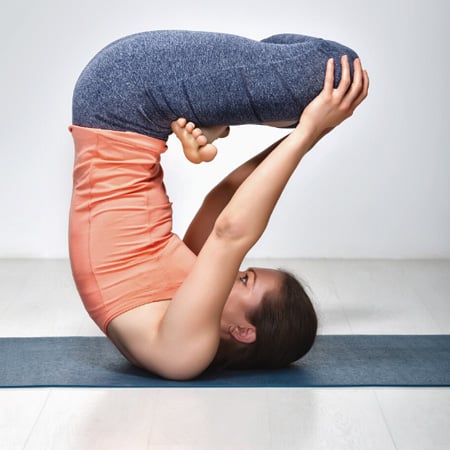
The poses in Ashtanga can also be quite challenging. It requires a lot of practice in order to “master” the poses in this style. This can be achieved because when you attend an Ashtanga Vinyasa Yoga class, it will be the same every time. There are a set of poses that are practiced in a particular order so that the body becomes accustomed to each one over time. The practice begins with the Primary Series. As you advance, you’ll move through the various series, each one more challenging than the last.
If you recall, Ashtanga, which means ‘eight limbs,‘ was developed by one of the early pioneers of yoga, Pattabhi Jois, in the Modern Era of Yoga. The intention of bringing this type of intensity and challenge to the practice honors the Tantra tradition of cleansing and healing the body. Part of the Tantra philosophy is to raise the energies in the body, through Pranayama exercises and body movements, to achieve deep awareness, alignment, and connection to the non-physical realm. Ashtanga Vinyasa Yoga touches on all these factors.
This is a progressive yoga practice and sometimes thought of as a type of yoga therapy. It’s probably best designed for a yogi that has been practicing other styles of yoga for a while and wants to deepen their practice.
These three styles of yoga highlight the physical aspect of the practice. This is what you expect to experience when you step into a yoga studio: moving bodies putting themselves into various poses. But each school of thought and each style and brand of yoga has a deeper intention that goes beyond the physical. Whatever style you practice, whether it be Pranayama or Ashtanga Vinyasa Yoga, you will be dealing with the basic elements: the breath, the body, and the mind. The combination and merging of these elements, in whatever form, all lead to a similar goal: awareness and enlightenment.
LET’S HEAT IT UP
Till here we have explored some of the popular styles of yoga that are currently practiced in yoga studios today. We’ve taken a look at softer practices like Pranayama and Restorative Yoga and got the body moving in Power Yoga and Ashtanga. Let’s continue our list with two other, yet similar styles of yoga.
Hot Yoga
A very popular brand of yoga today is Hot Yoga. You can probably travel to most major cities and find studios with Hot Yoga on their class listings. And it’s quite apparent what the main feature of this type of yoga is: heat! It was mentioned earlier that some Power Yoga classes will be hot. That is, the temperature has been raised to bring another level of intensity to the practitioner. Heat can also aid with flexibility and mobility for the practicing yogi. A Hot Yoga class can be +32 deg C / 90 deg F (or hotter). It carries the trend and popularity of having a “workout component” in your “gym yoga” practice. The poses practiced in Hot Yoga can vary from class to class. There is no standard or set of poses that are practiced. Instead, the yoga instructor can be creative and devise yoga sequences from the available thousands of postures.
Some common themes you will encounter in a Hot Yoga class are breath, the movement of the body through vinyasa flow sequences, holding yoga postures for muscle lengthening, healing, and strengthening, and the deep connection to the whole self as the yogi practices
Bikram Yoga
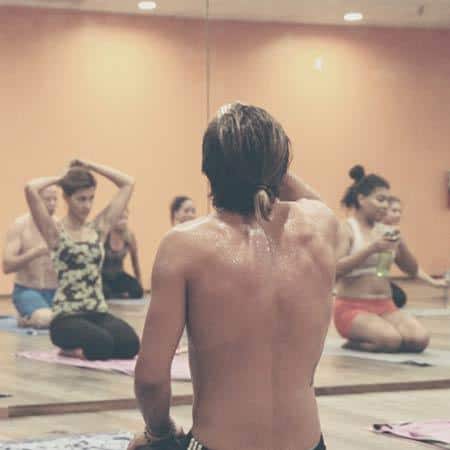
Hot Yoga is certainly an ongoing trend of practice, but it, too, has an origin. There is another style of yoga that features a hot room for practice that is called Bikram Yoga. Named and branded after Bikram Chourdhury, this modality combines traditional yoga poses with breath in a heated studio. The temperature in a Bikram class can range from +40.5 deg C (105 deg F) with 40% humidity. The added heat is to challenge the yogi: it generates discipline, stamina, endurance, and dedication.
Hot Yoga classes gave teachers the creativity to design their own classes. Bikram Yoga, however, resembles the classical style of yoga, Ashtanga Vinyasa Yoga, in that it features 26 specific poses that are practiced. Depending on the length of the class, these 26 poses may be repeated two or three times. So, when you attend Bikram Yoga, it will always be the same. One can watch their personal growth, development, and transformation as they return consistently to this style of yoga.
These hot yoga classes, may not be best for the beginner yogi; they can be intense and may require an introduction into other styles before diving head-first into this style. An intermediate or advanced level yoga student who can withstand the heat is a good candidate for the practice.
As you’re now wiping the sweat from your brow after reading about the most popular styles of yoga, let’s cool down while continuing learning about other 5 types of yoga.
Other styles of yoga
Over the years yoga has gained popularity and concurred the hearts of many all over the World. If you enter a yoga studio or your local gym, you’ll find the most popular yoga classes listed on the daily schedule. That being said, are you aware of other styles of yoga that exist? You might not believe it, but there are so many types of yoga that even hearing the names you would question yourself whether it is a “real type of yoga.” For example “Goat yoga”, “Nude yoga”, “Dog yoga”. What about “Harry Potter yoga”?
Even though there is a long list of interesting yoga styles that are practiced globally, below we will look deeper into 5 types of yoga which are worth learning about.
Forrest yoga
Forrest Yoga is a style of Power Yoga that is known to be physically challenging. Ana Forrest, the creator of this practice, has created an intention around this physical challenge. It is not only to stimulate and move the body, but it is designed to heal. She has combined the traditional forms of Yoga – asana, breath, meditation – with deeper forms of healing to fill a void she feels some forms of yoga miss.
Ana Forrest will openly tell you that she experienced physical and emotional injury in her life; part of that deep emotional hurt included addiction. She has created a blend of yoga poses that coincide with the Medicines practiced by the First Peoples of this planet. She uses rituals and ceremonies in her practice to realign with Spirit, just as her ancient ancestors did. She brings this into her classes to share this healing component with her students.
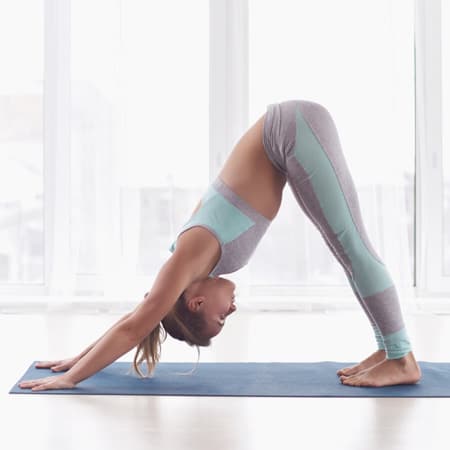
During the physical practice of Forrest Yoga, you will engage in carefully crafted sequences that focus on alignment, awareness of the body and breath, and to your core strength.
Ana Forrest has a very specific core strengthening process embedded into her classes that will push you to your edge but is intended for you to explore and discover your inner strength. It is a way to break through walls and barriers that we use to cover our pain and sufferings. In order to heal, we must break down those walls, to dig deep. The physical practice will definitely do that.
She incorporates the spiritual components through music and song. It is not uncommon to hear stories, sing, and play drums in a Forrest Yoga class. She is integrating the many paths of healing: Yoga, music, philosophy, shamanism, and more.
A Forrest Yoga class may not be easy to find, but if you run across a workshop that she is leading, you may want to attend. She is a world-renowned instructor and has toured all over the world. Her workshops and teacher trainings are definitely worth your time, especially if you’d like to deepen your practice and find ways to heal deep-seated trauma and emotional injury.
Kundalini yoga
Another rare style of Yoga that is practiced is called Kundalini Yoga. Developed as early as the 15th century, it is a yoga practice that combines other ancient practices and philosophies of Yoga: Bhakti Yoga, Raja Yoga, and Shakti Yoga. Bhakti Yoga is actually a devotional practice. It does not involve physical yoga postures. Instead, it focuses on singing and chanting. Raja Yoga incorporates the practice of meditation, while Shakti Yoga is about expressing your power.
So, when you attend a Kundalini Yoga class, be prepared to sing, chant, raise your vibration energies with dynamic breath work (pranayama), and practice physical and mental control.
A way to describe the intention around this practice is to imagine a sleeping serpent curled up at the base of your spine. In fact, The Sanskrit word kunda can mean “coiled snake.” Through your breath work and chanting, you awaken the sleeping snake and allow it to flow from the base of your spine (your Root Chakra point) directly through the other six chakras until it reaches your Crown Chakra. By the end of this practice, you will feel extremely invigorated.
The repetitive pranayama exercises, often accompanied by hand gestures, stimulate your entire system producing an energy and vibration that leaves you tingling at the end of class!
Awakening the coiled serpent and letting it travel along your spine is a symbol for freeing your mind and consciousness. It’s a practice of deep investigation; one that penetrates through barriers or past actions and events, to guide you to a full and open life. Kundalini Yoga is about realizing your highest potential.
Aerial yoga
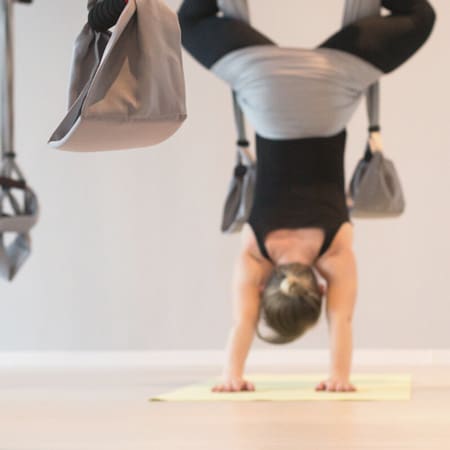
Aerial Yoga is exactly what it sounds like; practicing yoga postures in mid-air! How does one do that? Some yoga studios are equipped with long hanging silks or hammocks securely fastened from the ceiling rafters. Guided by a trained instructor, the student can perform many yoga postures similar to ones that you may do on your yoga mat.
It sounds like you would need a lot of talent, grace, and precision to take an aerial yoga class. Quite the contrary; you don’t have to be a trapeze artist or aerialist to take a class like this. In fact, aerial Yoga is suited well for a beginner yogi.
Gravity acts as an aid during your aerial yoga class. While hanging in the hammock, you can achieve deep stretches and the elongation of your muscles. For example, if you have a stiff back, hanging freely in the silk allows your spine to lengthen. You will feel supported during the process because there is less strain to the back. Further, it eases tension not only down your spine but also in your hip joints. Back-bends are a breeze in aerial Yoga!
Aerial Yoga has been shown to improve digestion. Depending on the styles of stretches performed in your class, the movements, which may involve supported inversions, can enhance the digestive mechanism system. Further, it may assist with various digestion-related issues like constipation and indigestion. This type of yoga practice also is good for your heart and blood circulation. Through the movements and the suspended yoga postures, you’ll experience detoxification of your circulatory and lymphatic systems. This can have a direct effect on lowering the onset of various cardiovascular issues.
Aerial Yoga also helps you to build core strength, aid in physical movement, increase your flexibility, and even experience full relaxation. Have you ever taken a nap in a hammock? Try doing Savasana in aerial silk; it’s comforting and nurturing. You can have a beautiful meditative experience at the end of your supported in-flight yoga practice.
Tantra yoga
Another style of Yoga that is often misunderstood is Tantra Yoga. Many people relate this type of Yoga to the expression of sex. Tantra Yoga is certainly about getting in touch with your body and being able to raise the subtle energies within you.
This idea may improve your sex life, but it is important to know that Tantra Yoga is much more than sexual expression. In fact, many of the modern styles of Yoga we practice today are derived from the tantric philosophy.
The true meaning of tantra is about expansion. In the ancient history of Yoga, the practice was limited to ceremonial practice that involved scriptures, songs, prayers, and meditation. As the yogic philosophy evolved, practitioners began to believe that there was more to reaching enlightenment. In the earlier teachings, enlightenment was something that was reached when energies and attentions were sent outward. New ways of thinking proclaimed that the path toward enlightenment was not only an outward expression but something that can be achieved inwardly. In order to do that, however, we need to focus on ourselves. The movement of the physical body was eventually introduced into the practice (asana). It was later taught in this new era of Yoga that if the mind and body can become clear, it can achieve enlightenment.
Tantra is a Sanskrit word; it is a combination of two words: tanoti and trayati, or tan and tra. “Tan” means expansion, and “tra” means liberation. Therefore, the whole word can mean the expansion of consciousness and the liberation of energy. One could not reach eternal bliss if they are blocked or weighed down by the worldly actions that surrounded them or engulfed them. A true yogi needed to release him or herself from these binds to attain true freedom; to be able to live in the world, but not be consumed by it. Tantra Yoga was the path toward that freedom.
In essence, tantra is designed to incorporate the ancient scriptures and teachings and the physical being. The intention is to connect fully with Self and The Devine.
Tantra Yoga is practiced to get you more in-tune with your whole being, so it involves the physical body, the energetic body, the emotional body, the wisdom body, and the bliss body. When these different aspects of the self are weaved together, the expanded consciousness and liberated Spirit is achieved.
So, what might you do in a Tantra Yoga class? As mentioned, other common styles of Yoga, like Power Vinyasa Yoga and Hot Yoga, have roots in tantra. Moving through a pose-sequence with the guidance of breath is certainly tantric. Sitting in meditation and focusing on breath flow to enrich Prana is also tantric. A more traditional Tantra Yoga Class will guide a student beyond the asanas and ancient teachings, and delve into aspects of astrology and Ayurvedic medicine. Tantra Yoga is a holistic practice; it not only will improve your sex life, but it will enhance your entire life.
Prenatal yoga
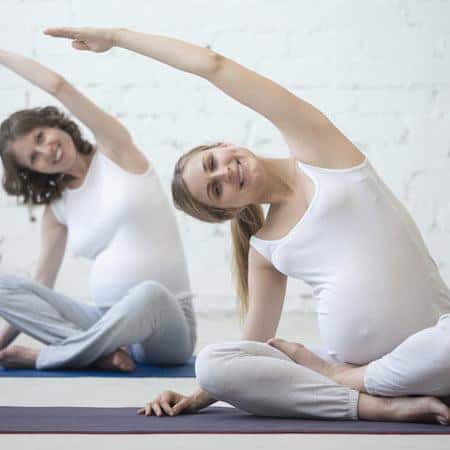
Yoga can be especially helpful for an expecting mother. There is even a yoga class specifically designed for pregnant women: Prenatal Yoga (also called Pregnancy yoga). A new mom can highly benefit from a prenatal yoga class because it caters to the many changes her body is experiencing through the trimesters. Not only are there physical changes in the body, but there may be emotional shifts, too. Yoga can manage these conditions so that the mother can have a smooth and healthy delivery.
As the fetus is developing and growing, the expecting mother may experience stiffness, achy joints, sore back muscles, even nausea, and headaches. Overall, it can be quite an ordeal for the changing body.
A Prenatal Yoga Class may offer a variety of poses and sequences, but the main focus is to keep the body limber, mobile, and strong.
A good example is engaging in a modified vinyasa flow while standing. Movements will incorporate side body stretching, chest and hip opening postures, all the while supported by deep breathing. Any and all of the poses and sequences can be modified depending on the condition of the pregnant mom. It is not uncommon for a woman to attend a regular Vinyasa Flow Yoga Class in the early stages of pregnancy. Breathing and moving with moderate adjustments will prepare her for the upcoming changes. Poses like twisting or backbends will soon be difficult to practice and eventually eliminated for the safety of the fetus; more modifications will be needed as well. But attending a Pregnancy Yoga Class will offer specific variations of commonly practiced poses so that the yoga experience remains rich.
Breath is another primary focus in a Prenatal Yoga Class. Due to added pressure around some of the internal organs, breathing may become labored or shallow. Deep diaphragmatic breathing is taught to keep the lungs strong and air passages open. Breathing will be key when it comes time for delivery of the baby. Practicing deep breathing in a yoga class is a great benefit.
Relaxation is also the main focus in a Pregnancy Yoga Class. The changing body is under continuous stress during pregnancy. Longer relaxing poses, like Savasana, are practiced in this style of Yoga. Yoga props, like blankets and bolsters, are often used for added support of the body, so the expecting mom can completely relax. The ability to fully release tension during these important days and months can help with the mom’s emotions, too. Anxiety and sad feelings can be monitored and suppressed when Yoga is a part of her self-care efforts. So, if you or someone you know is pregnant, seeking out a Prenatal Yoga Class at a studio or community center will certainly be in your favour.
Closing thoughts
Yoga has a very rich history and it is quite obvious that it is not just a trendy exercise, but a lifestyle that has many benefits all rooted in ancient traditions, rituals, and beliefs. These elements continue to show up in the styles we have discussed here and the many other styles that were not listed. What we have touched on, though, are the more popular styles of today and yet, we are only scratching the surface of the many variations of yoga practices that are available.
Whatever your intention or goal, whether it’s to gain more strength in your body or clarity in your mind, there is a yoga practice designed for you.

